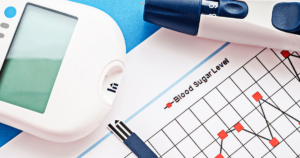Guest Blog- Why The Sugar Level of Diabetics Rose by 20% During the Nationwide COVID-19 Lock Down?


Worldwide, numerous studies show how stress increases the chances of developing various ailments, particularly chronic ones. Similarly, stressed persons suffering from diabetes run a greater risk of poor blood glucose levels. A major reason for the higher sugar levels is because stress hormones such as cortisol can increase blood sugar.
Considering these facts, Beato –a full-stack digital ecosystem for diabetes care and management– began analysing its records to track these trends. Pan-India, it was clear that anxiety about COVID-19 and the stress arising from lock down restrictions as well as the lack of prompt medical attention had caused an overall increase of 20% in blood sugar levels. The results were derived from 8,200 diabetic patients across India.
As the COVID-19 outbreak began spreading across the nation in March this year, blood glucose levels of diabetics began rising simultaneously. In all these cases, the stress and anxiety resulting from the overall disruption of their lives and livelihoods acted as precipitating factors.
The highlights of this rise as seen in the above graph are encapsulated below:
- The average pre-pandemic fasting sugar levels in January till mid-February was 138 mg/dl.
- Since the Coronavirus spread disrupted live span-India in March 2020, the blood glucose level of diabetics began rising. Average fasting sugar levels in March till mid-April was 165 mg/dl.
- The COVID-19 lock downs resulted in sugar levels of diabetics rising by 20%.
- The key factors: stress, anxiety, overall disruption of lives, restrictive regimens and confinement at home.
- The graph indicates regions in the North, West and North-east India witnessed a greater spike in the blood glucose sugar levels.
- Major states affected were Rajasthan, Ladakh, Andhra Pradesh and Uttarakhand, which are typically rice and carbohydrate-consuming states.
- A somewhat higher trend was observed in Rajasthan, Bihar, Jharkhand, Uttarakhand, UP, J&K – states or Union Territories classified in the low or middle epidemiological transition level (ETL).In these regions, rising cases of diabetes have been observed for several years. Going forward, this may pose a challenge, especially as many states in the low/middle ETL are less prepared to meet the challenge of NCDs (non-communicable diseases).
Overall, the highest rise in blood glucose levels was seen in Daman and Diu (49%), Tripura (38%), Nagaland (30%), Manipur (28%), Uttarakhand (25%), J&K (23%), Ladakh (23%), Jharkhand (22%), Rajasthan (21%), Andhra Pradesh (20%) and Bihar (20%).
Undoubtedly, stress and anxiety are active triggers in raising blood sugar levels. Therefore, daily diabetes management is imperative in tracking and managing the chronic disorder. This is particularly important due to the threat of grave consequences if the ailment is not managed proactively.
